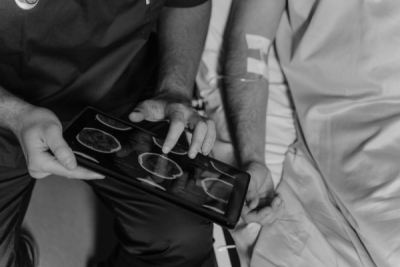Alcohol use disorder (alcoholism) is among the most prevalent mental disorders worldwide. Individuals affected by this disease cannot control their impulse and chronically exhibit an intense and often increasing pattern of alcohol consumption, despite the serious costs to their health, to the lives of their family and friends and to society. And, despite its important consequences for public and individual health, alcohol dependence has a low demand for treatment (1).
Alcoholism not only predisposes individuals to develop various complications, such as diseases of the liver, pancreas, cardiovascular problems, other psychiatric problems and several other health issues, but it also makes these patients more vulnerable to hospitalization and other health complications, which can evolve, unfortunately, to death. Therefore, one of the alternatives for reducing the damage caused by the harmful use of alcohol is to try to identify individuals at risk, so that public policies can be directed towards this public, aiming at preventing and treating more serious cases and reducing consumption.
It is known that the age at which alcohol consumption starts is worrisome in several aspects, since the earlier alcohol use occurs, the greater the associated risk of developing dependence in adult life. Heavy episodic drinking (HED), also known as abusive consumption or binge drinking, is a consumption pattern that tends to be very common among university students, as its main objective is to get drunk quickly, since it is characterized by the ingestion of a large amount of alcohol in a short period of time. This consumption pattern, defined by the ingestion of five or more drinks for men and four or more drinks for women on a single occasion, is quite prevalent in early adult life, coinciding with university life. However, some individuals may maintain this consumption pattern into adulthood.
Faced with these concerns, a French study (2) assessed whether the frequent consumption of alcoholic beverages in the age group between 18 and 25 years could be a risk factor for alcohol dependence in adult life. The study retrospectively collected sociodemographic, behavioral and alcohol consumption data in three periods of life: before age 18, between 18 and 25 years and between 25 and 45 years. The results showed that 90% of men and 70% of women who practiced HED in adolescence continued to drink that way in young adulthood, concluding that this consumption pattern at an early age can be a risk factor for alcoholism in adult life and that efforts to prevent the onset of heavy drinking during adolescence can substantially reduce harmful patterns of alcohol use in young adulthood.
Another study, this time with Americans (3) aged between 21 and 45 years, tested the hypothesis that risk factors (such as family history of alcoholism, gender, impulsivity and low level of response to alcohol) could predict the intensity of binge drinking during an alcohol consumption session. According to the authors, having relatives with a history of alcoholism, being male and having greater impulsivity (desire to perform certain actions without thinking about the consequences of this deed) is associated with a higher rate of compulsion (performing actions repeatedly). Furthermore, participants who had all three risk factors had greater impulsivity during the test compared to the lower risk group. Therefore, the study concluded that alcohol abuse can be an early indicator of vulnerability to alcoholism that should also be considered in the clinical evaluation.
Prevention measures for excessive alcohol consumption during young age are essential to avoid negative outcomes, both in the short term, such as involvement in fights, traffic accidents and unprotected sex, as well as the development of alcohol dependence.











